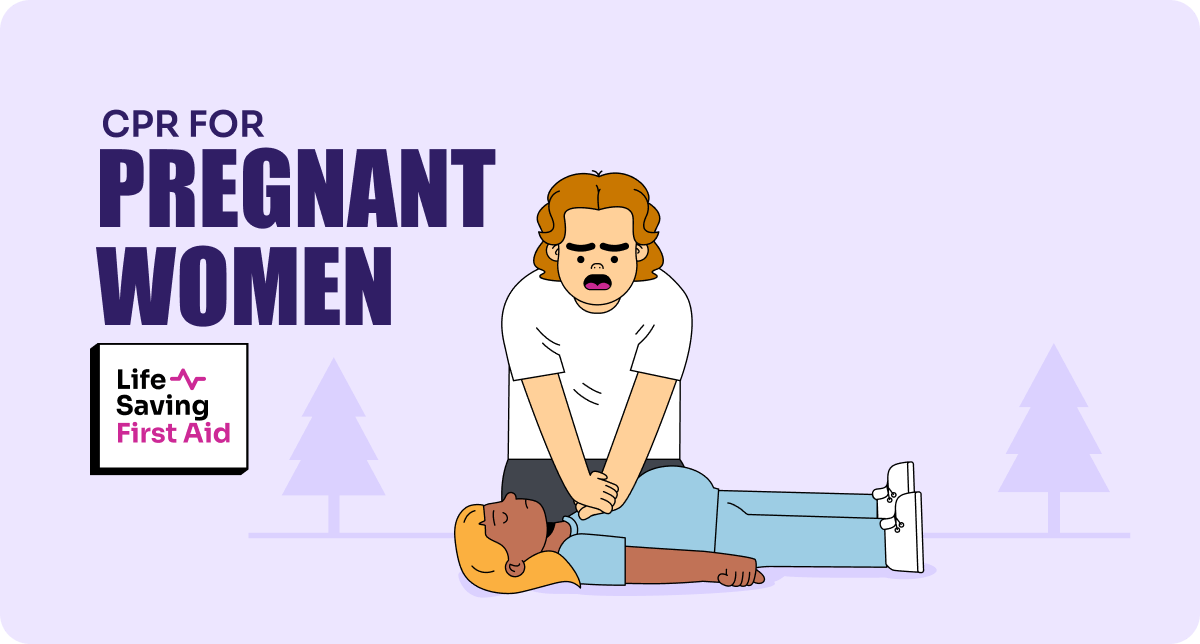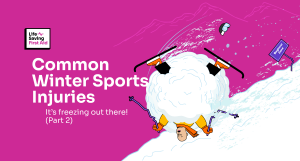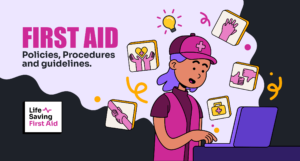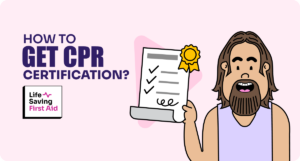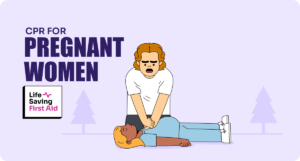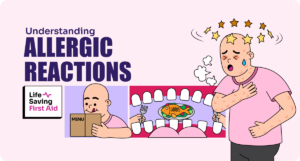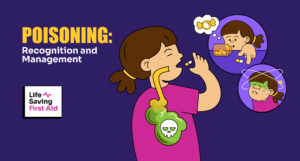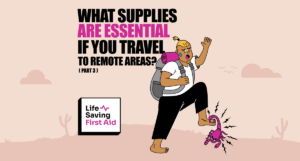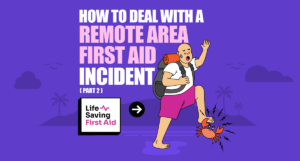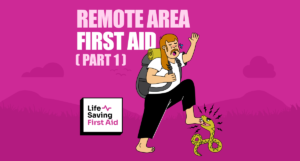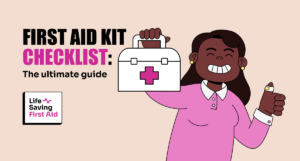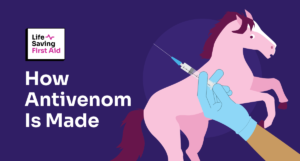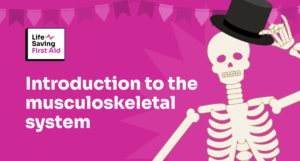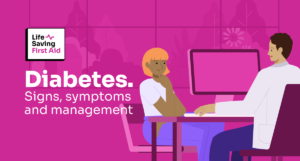CPR for Pregnant Women
Contrary to popular belief, CPR for pregnant women is crucial for increasing the chances of survival for both the mother and the fetus. Many people hesitate when confronted with someone who is pregnant and has suffered a cardiac arrest.
The reality is CPR for a pregnant casualty is basically the same as for anyone else. There is, however, one exception. It’s called Manual Left Uterine Displacement. We will discuss this in detail later but essentially it means shifting a rounded abdomen to the pregnant patient’s left side.
When is CPR needed for pregnant women?
Cardiac Arrest in pregnancy is rare however when it occurs providing CPR and Defibrillation as quickly as possible is important for the survival of both the mother and the fetus.
According to the ARC Guidelines, the most common causes of Cardiac Arrest during pregnancy are:
- Cardiac disease
- Pulmonary thrombo-embolism – a blood clot blocks an artery in the lungs
- Haemorrhage – bleeding
- Sepsis – our body’s extreme reaction to an infection
- Hypertensive disorders of pregnancy – high blood pressure
- Poisoning and self-harm
- Amniotic fluid embolism – when amniotic fluid enters the maternal bloodstream
- Pregnant women can also have the same causes of cardiac arrest as females of the same age group (e.g. anaphylaxis, drug overdose, trauma).
Initial assessment and safety precautions
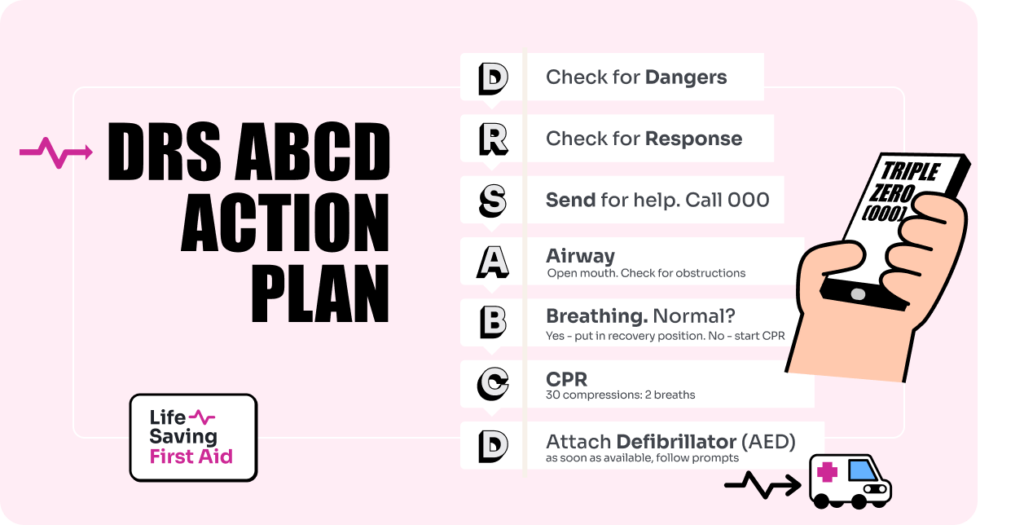
As with any First Aid intervention, we would use our initial action plan – DRSABCD.
- Danger – Make sure the area is safe for you and the casualty
- Response – Attempt to get a response from your casualty
- Send for help – No response call 000
- Airways – Check their airways
- Breathing – See if they are breathing
- CPR – Commence CPR if they are not breathing
- Defibrillation – Use an AED as soon as possible
Some physiological changes due to their pregnancy may complicate the management of their Airways, Breathing and CPR. They are:
Increased:
- Cardiac output – the heart needs to pump more blood to supply adult and unborn child
- Blood volume – More blood in the blood vessels
- Minute Ventilation – faster breathing rate to get more air into the lungs
- Oxygen consumption – More oxygen is required for the adult and unborn child.
Decreased:
- Lung volume – due to uterine pressure on the lungs
So, good quality CPR is required to overcome these complications.
Step-by-Step Guide to Performing CPR on Pregnant Women
As mentioned earlier there is little difference between CPR on a pregnant casualty or a non-pregnant one.
- Ensure the casualty is on their back. Place a rolled-up towel or other article under their right hip to tilt their body slightly to the left – We’ll get to the reasons for this later – check to see if their shoulders are flat on the ground. This is important.
- Kneel beside the casualty.
- Place the heel of one hand on the centre of the casualty’s chest, with the other hand on top, finger interlocked.
- Lean over the casualty and use your body weight to press down one-third of the chest cavity.
- Release the pressure and repeat.
- Continue at a rate of 100 to 120 compressions per minute.
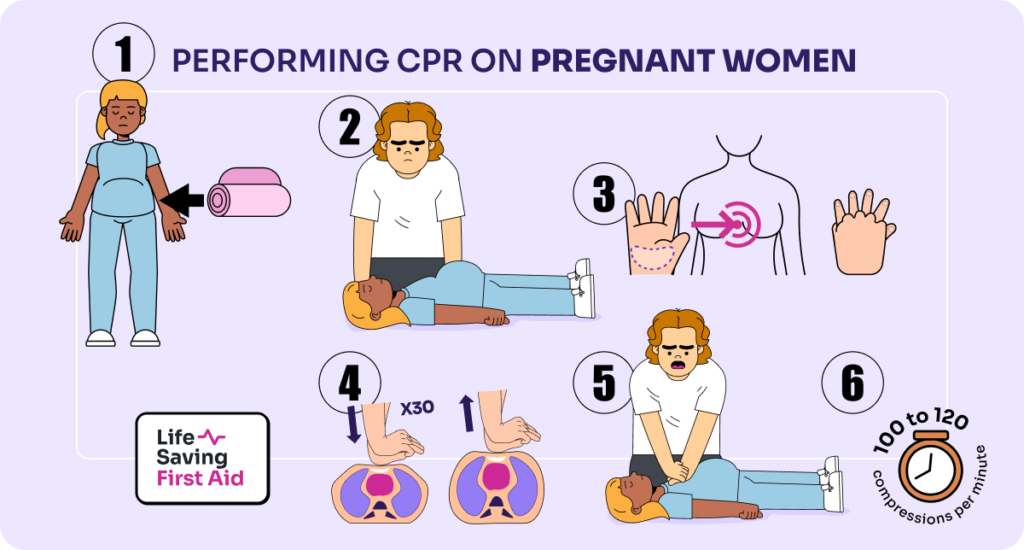
Modifying Chest Compressions for Pregnancy
There is no need to modify the method of chest compressions for a pregnant casualty. The centre of the chest, lower third of the sternum is still the correct location to place your hands.
Their back and shoulders should be on the ground for the compressions with their hips tilted at an angle of approximately 15 to 30 degrees. This hip tilt for CPR is the only difference. ( see “ Special Considerations and Challenges”)
Rescue Breaths and Airways Management
Following the application of 30 compressions at a rate of 100 to 120 compressions per minute deliver 2 rescue breaths. The method for rescue breaths is as follows:
- Tilt their head back and pinch the soft part of their nose with one hand.
- Open their mouth with the other hand.
- Take a breath and place your mouth over the casualty’s mouth forming a tight seal with your lips.
- Breathe out steadily through your mouth. Watch for the rise of the casualty’s chest.
- Stop when their chest starts to rise and repeat when the chest has returned to normal.
- Return to compressions when you have completed two rescue breaths.
Continue CPR until the ambulance arrives, you can no longer perform compressions due to exhaustion, the casualty recovers, or a medical professional tells you it is ok to stop.
If the casualty starts breathing but remains unconscious, they must be placed in the recovery position on their left side. ( see “ Special Considerations and Challenges”)
For the recovery position – starting with the casualty on their back:
- Extend their left arm at right angles to their body.
- Place their right hand on their left shoulder.
- Lift their right leg, under the knee and as it bends ensure the right foot is flat on the floor.
- Their left leg should be straight.
- Roll the casualty over, using their hips and shoulders.
- Place the bent right leg gently in front of the left leg to prevent the casualty from rolling onto their stomach.
- If required, support their head and open their mouth to maintain an open airway.
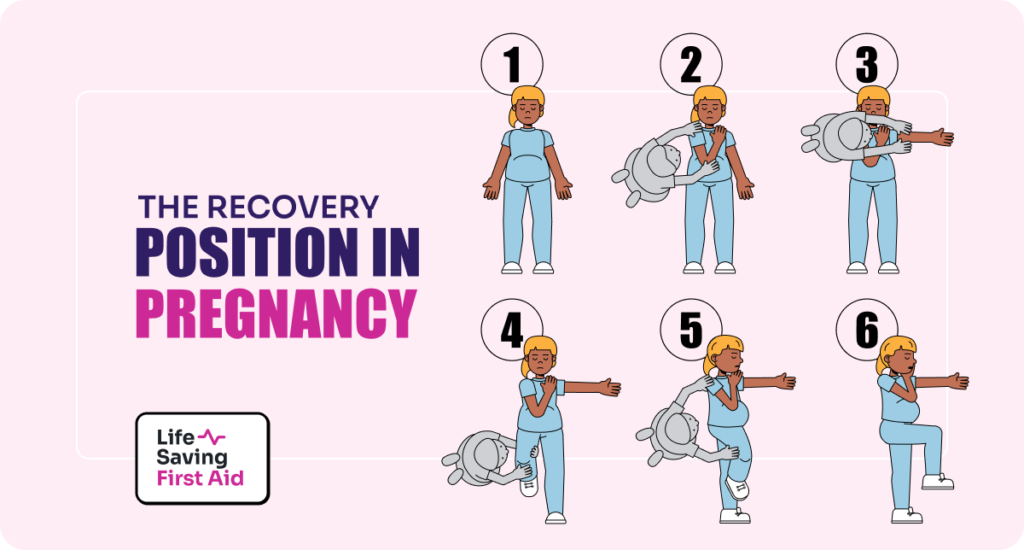
What if for some reason, I cannot place a pregnant casualty in the recovery position on their left side?
Good question. Place them on their right side but wedge a cushion or rolled-up towel under their tummy. ( see “ Special Considerations and Challenges”)
Special Considerations and Challenges
The obvious special condition and challenge for a first aider is the presence of two patients the mother and fetus. There should be no hesitation in assisting the pregnant casualty.
Remember the best way to help the baby is to help the mother.
Then, of course, there is supine hypotensive syndrome. Supine – lying on their back, Hypotensive – a decrease in blood pressure, and Syndrome – a condition characterised by a set of associated symptoms.
So, because the pregnant casualty is lying on their back, the uterus will compress the abdominal organs and blood vessels. Specifically, the Inferior Vena Cava – a large vein located on the right side of the vertebra bringing deoxygenated blood back to the heart, and the Aorta which carries oxygenated blood from the heart to the body and other blood vessels.
When these are compressed by the uterus, blood flow is reduced, and this can have a negative effect on BOTH our casualties.
To avoid this,
- A. We can roll the casualty on their left side when in the recovery position. This will cause the uterus to move off the Inferior Vena cava and Aorta thus preventing supine hypotensive syndrome,
And
- B. When performing CPR, raise the right hip approximately 15 to 30 degrees. This will give the same result.
The Role of Automated External Defibrillators (AEDs) in Pregnancy
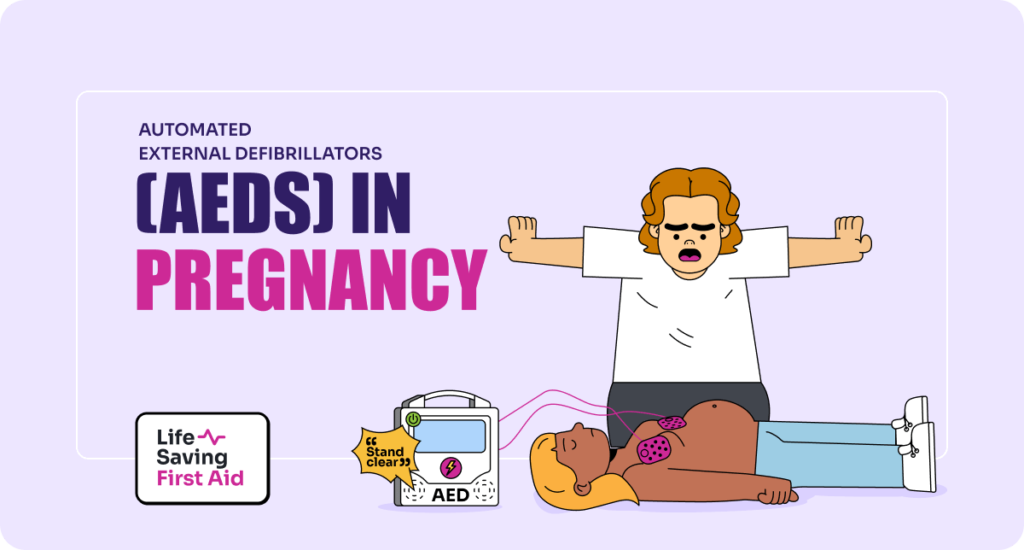
Can you even use an AED on a pregnant casualty? The answer is Yes!
AED shocks are safe for women at any stage of pregnancy and do not cause harm to the baby
Using an AED on a pregnant woman in cardiac arrest is essential for increasing the chances of survival for both the mother and the fetus.
A defibrillator helps reset the heart into a regular heart rhythm. First switch on the AED then follow the visual and voice instructions from the device.
It will either deliver a shock or instruct you to continue CPR if the shock is not necessary.
Continue to follow the instructions given by the AED until help arrives. ( For more great info on AEDs go here )
Importance of Professional Training
As you can see, there are some special circumstances you as a first aider need to be aware of regarding CPR on a pregnant casualty. Get some professional training in First Aid and CPR.
This will give you the confidence, and the skills, to help not only pregnant casualties but anyone who needs First Aid assistance.
Enroll in a CPR Course
There are CPR courses available which cover the techniques needed to carry out CPR on a pregnant woman. Life Saving First Aid runs CPR courses 7 days a week. You can choose your day and time, book and pay online. Simple
Take the opportunity. You never know when you may be called upon to assist someone in need.
Well, that’s that. Until next time….. Stay safe.
Adrian
